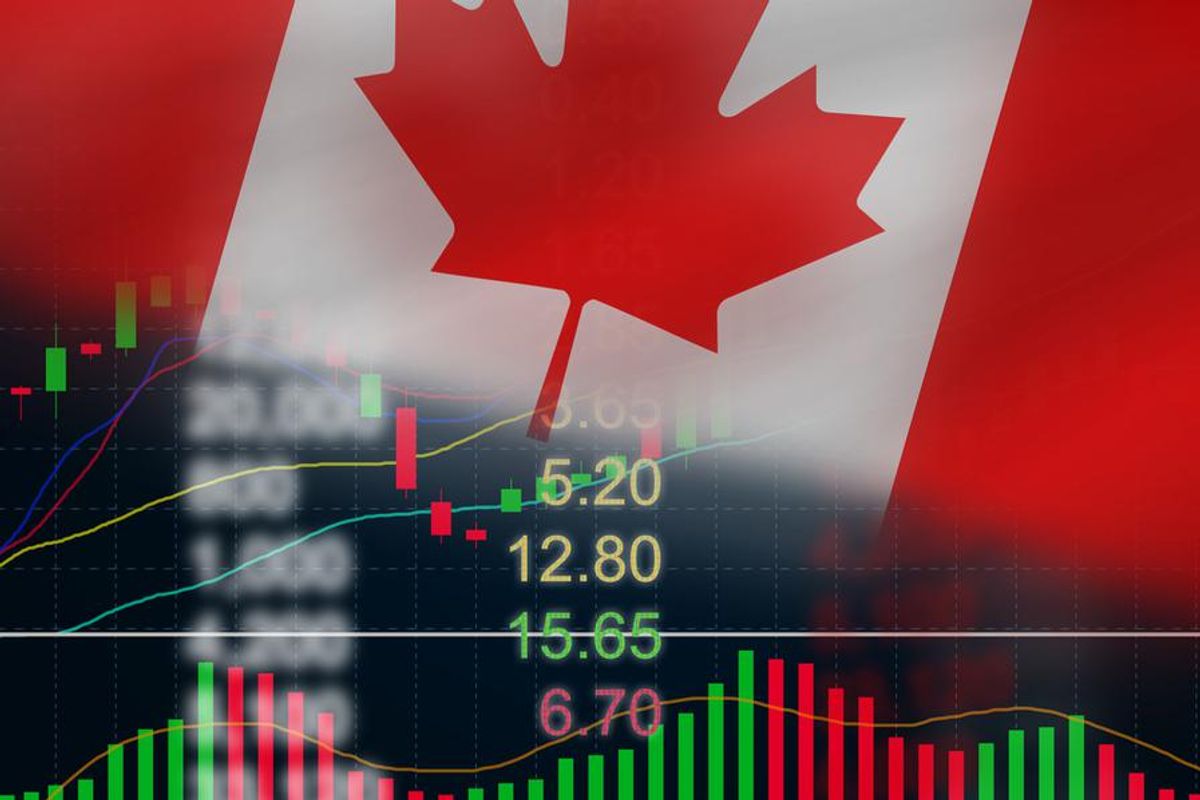How to Trade the Canadian Financial Sector with ETFs
Investors implementing a tactical, short-term sector rotation strategy by going long in the financial sector can do so via ETFs.

This syndicated article was originally published by the Canadian ETF Market. The Investing News Network (INN) believes it may be of interest to readers; however, INN does not guarantee the accuracy or thoroughness of the information reported by external contributors. The opinions expressed by external contributors do not reflect the opinions of INN and do not constitute investment advice. All readers are encouraged to perform their own due diligence.
The S&P 500 (SPX) and NASDAQ 100 (NDX) continue to tumble amid what is increasingly shaping up to be a bear market. Both indexes are now down 20% or more from their 52-week highs and have pared most of their gains from the low-interest-rate environment and quantitative easing of 2020 – 2021.
North of the border, the Canadian stock market is fairing much better. Year to date, the benchmark iShares S&P/TSX 60 Index ETF (XIU) is down just -3.17%. Much of this outperformance can be tied to the outperformance of the dominant energy sector, thanks to soaring commodity prices caused by inflation and supply chain snags.
However, the energy sector is not the largest on the TSX. That honour goes to the financial sector, which is around 36%. This sector comprises Canadian banks, insurance companies, financial services companies, and asset managers. Given that numerous 50-basis point increases from the Bank of Canada are forecasted, these companies may experience more substantial revenues and earnings due to the higher interest rates they can now charge.
Investors implementing a tactical, short-term sector rotation strategy by going long in the financial sector can do so via ETFs. The NEO ETF screener is a great way to look for funds in this sector.
Pure-Play Bank Strategy
Canada’s “Big Six” bank stocks have done great so far in 2022, with many surpassing earnings estimates and raising dividends. Historically, the banks led the financial sector (and overall market) in terms of growth and market cap. As an investment, they have strongly outperformed the index.
The banks include Royal Bank of Canada (RY), Toronto-Dominion Bank (TD), Canadian Imperial Bank of Commerce (CM), Bank of Nova Scotia (BNS), Bank of Montreal (BMO), and National Bank (NA). Together, they form an oligopoly, with minimal competition and fear of disruptions.
Notable features of this cohort are their tendency to be classified as a “dividend aristocrat.” This generally refers to a company that has increased ordinary cash dividends for at least 20 consecutive years. Many of these stocks are mainstays in dividend-growth-oriented portfolios.
The BMO S&P/TSX Equal Weight Bank Index ETF (ZEB) offers a hands-off, managed solution to self-administering a portfolio of bank stocks. With the DIY approach, investors can avoid management expense ratios (MER). In return, they must balance their portfolios personally, pay trade commissions, and manage dividends.
Buying ZEB costs a MER of 0.28% (around $28 on a $10,000 portfolio). In return, the fund manager takes care of rebalancing the fund, paying out monthly distributions, and trading. The equal-weight approach offers banks more balanced exposure, enhancing diversification. Finally, ZEB is capital efficient – it costs much less to buy one share of ZEB than shares of all six banks in equal weightings.
Broad Sector Strategy
Investors seeking broader diversification within their sector tilt can look to financial stocks other than banks. These include insurance companies like Manulife Financial (MFC) and Sunlife Financial (SLF), asset managers like Brookfield Asset Management (BAM) and Power Corporation of Canada (POW), and financial services companies like goeasy (GSY).
Some of these stocks tend to be smaller in market cap and more volatile (higher beta) than six bank stocks. Some may pay higher dividend yields (the insurance companies in general). For their higher risk, investors could be rewarded with stronger growth.
A way to capture the performance of these stocks is through a broader sector-based ETF like the iShares S&P/TX Capped Financials Index ETF (XFN). XFN tracks the performance of 27 TSX financial stocks with a 25% cap on each of their weights.
The capped nature of XFN is an interesting addition. This would theoretically prevent a situation where Nortel grew in 2009 to become a substantial portion of the TSX 60. It also ensures that the weighting held by banks does not substantially outweigh the rest of the sector.
For the most passive sector tilting strategy possible, XFN comes closest. Index investors looking to over-weight the financial sector would get the most accurate exposure through XFN. While ZEB focused on just six stocks, XFN is a much more precise approximation of the sector’s actual performance, thanks to its broader nature.
There is a downside to XFN – the high MER. Currently, the ETF costs 0.61%, or around $61 in annual fees for a $10,000 portfolio. This is substantially more than broad-market index funds and still higher than most sector or thematic funds. iShares may lower fees in the future as assets under management grow, and competitor offerings intensify, but don’t bet on it.
Disclaimer: This article is limited to the dissemination of general information pertaining to investment strategies and financial planning and does not constitute an offer to issue or sell, or a solicitation of an offer to subscribe, buy, or acquire an interest in, any securities, financial instruments or other services, nor does it constitute a financial promotion, investment advice or an inducement or incitement to participate in any product, offering or investment.